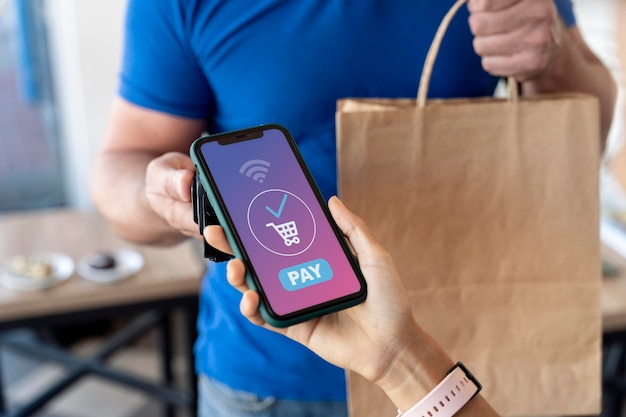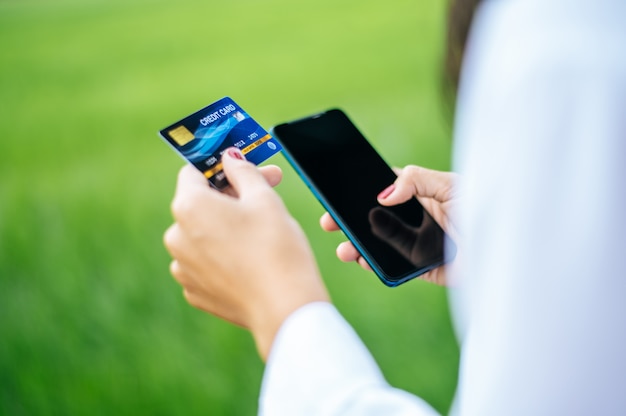Digital payments: Security Measures and Threats
According to Juniper Research, the number of digital wallet users is anticipated to reach 50% of the global population by 2024. Furthermore, Statista predicts that by 2023, individuals would spend up to 6.7 trillion USD on digital payments. Finally, according to eMarketer, more than a billion individuals worldwide will be using mobile payment applications by the end of that same year.
All of these statistics indicate that businesses must include digital payments in their list of online payment gateway if they wish to reach a broader audience. And, with the epidemic changing the way we pay, there's almost no way around it.
Merchants, on the other hand, must be aware of the various dangers and fraud tendencies that are blooming in online markets. In this post, we will discuss the most common fraud patterns and digital payment dangers to be aware of.

Social engineering
According to a 2019 study by the European Payments Council, social engineering is at the top of the list of digital payment dangers. Social engineering is, by definition, a "technique of persuasion." It occurs when a fraudster tricks a victim into performing activities that jeopardize the security of his private payment information. People are predisposed to trust others, therefore this technique works. As a result, it is easier to persuade someone to breach confidentiality than it is to develop cutting-edge technology to attack someone's system or device.
Fraudsters use a variety of ways to deceive internet victims. Phone conversations, emails, and social media platforms are examples of these channels.
Phishing and frauds are the two most common social engineering tactics. They are both attempting to get consumers to share their payment information. They frequently employ the "emergency" technique to exert psychological pressure on individuals and force them to do things they would never do under different circumstances.
Malware
Malicious software, often known as malware, is any program that is used to gain access to third-party systems in order to steal or meddle with sensitive data. It comes in a variety of sizes and shapes. And, as fraudsters become more tech-savvy, detecting and preventing malware assaults becomes increasingly challenging.
Thus, spyware, adware, Trojan horses, ransomware, fileless malware, and ATPs are among the most frequent forms of malware.
Some software is relatively "safe" for the user, with the only purpose of collecting and storing data about the user's activity. However, several applications are designed to encrypt data and keep it hostage for ransom.
Mobile cyberattacks
With a modern user's increasing reliance on a mobile device, hackers are venturing into mobile app fraud. It is less secure, making it an obvious target for scammers. In reality, at least 38% of iOS apps and 43% of Android apps are deemed "vulnerable." Furthermore, with mobile devices, the fraudster does not need physical access to your smartphone to steal critical data.
Unfortunately, most cyber-attacks are the result of user inattention or a number of minor flaws in various parts of the mobile application.
We'll discuss remedies to this problem later. But, for the time being, we believe it is critical that our viewers understand where these cyber-attacks originate.
APT
Some people classify APT (advanced persistent threat) as a kind of malware. And there is some truth to it. APT is a targeted assault against a specified target, which might be a human, a corporation, or software. It intends to adapt to defense tactics and changing technologies as they emerge.
The assaults' objectives differ. However, because APTs are usually directed against government organizations and defense contractors, they are connected with cyberespionage.
Cryptojacking
Cryptojacking is becoming more popular as cryptocurrencies gain traction. It is mobile-related and occurs when hackers utilize another person's mobile device for crypto mining without their knowledge.
Most victims of these threats report very low battery life, overheating, and other symptoms, suggesting that the device was used extensively by a third party.

SMS message threat
Everyone seems to have gotten an email alerting them of an unexpected bequest given to them by a late relative someplace in sunny California. Nowadays, everyone is aware of phishing emails. As a result, they do not trust them. They do, however, believe in the reliability of SMS texts.
The unfortunate reality is that SMS texts may be readily faked, and now more than ever with the improvements in technology available to scammers. As a result, when consumers share critical information with criminals via SMS texts received from the best payment gateway India provider number, they become victims of smishing. They tend to instill a sense of urgency in the measure, making the victim less hesitant to disclose critical data with the hacker.
There are just too many threats to count. And as technology advances, scammers might devise more sophisticated methods to prey on the less technologically skilled. The good news is that there are methods and precautions that may be taken to avoid these risks.
Digital payment security measures
Email validation and authentication
These two techniques can help the best payment gateway India providers detect and prevent email phishing and spoofing early on. The European Payments Council advises utilizing SPF and DKIM as preventive methods, as well as conducting periodic awareness campaigns. Informed implies armed, which is precisely what your users require.
Limits on the number of installed apps and cyber hygiene
Although it may appear simple, with the massive amounts of software we use nowadays, the easiest approach to avoid infection is to restrict the number of installed programs. Only download applications from reputable providers, and remember to keep them up to date. Outdated apps enable scammers to gain access to your device without your knowledge.
Monitor your mobile device closely.
Not only will this allow you to identify traces of ransomware that would otherwise be undetectable, but it will also allow you to follow any unusual behavior on the device that points to illegal use of your mobile device. Maintain contact with your cell network provider as well. This is especially important if you detect network connectivity difficulties or no incoming calls for an unusually extended period of time.
PCI DSS certification
This security criterion is just one of several that must be met by online retailers. It safeguards the user's internet info. As a result, if you're a user, be sure to only spend on sites that have this certification. If you are a merchant, please contact us as soon as possible so that we may assist you with obtaining a certificate.
These are just a handful of the major digital payment risks and security precautions to be aware of. We'll talk about it more later. So, keep an eye out!
Post Your Ad Here
Comments